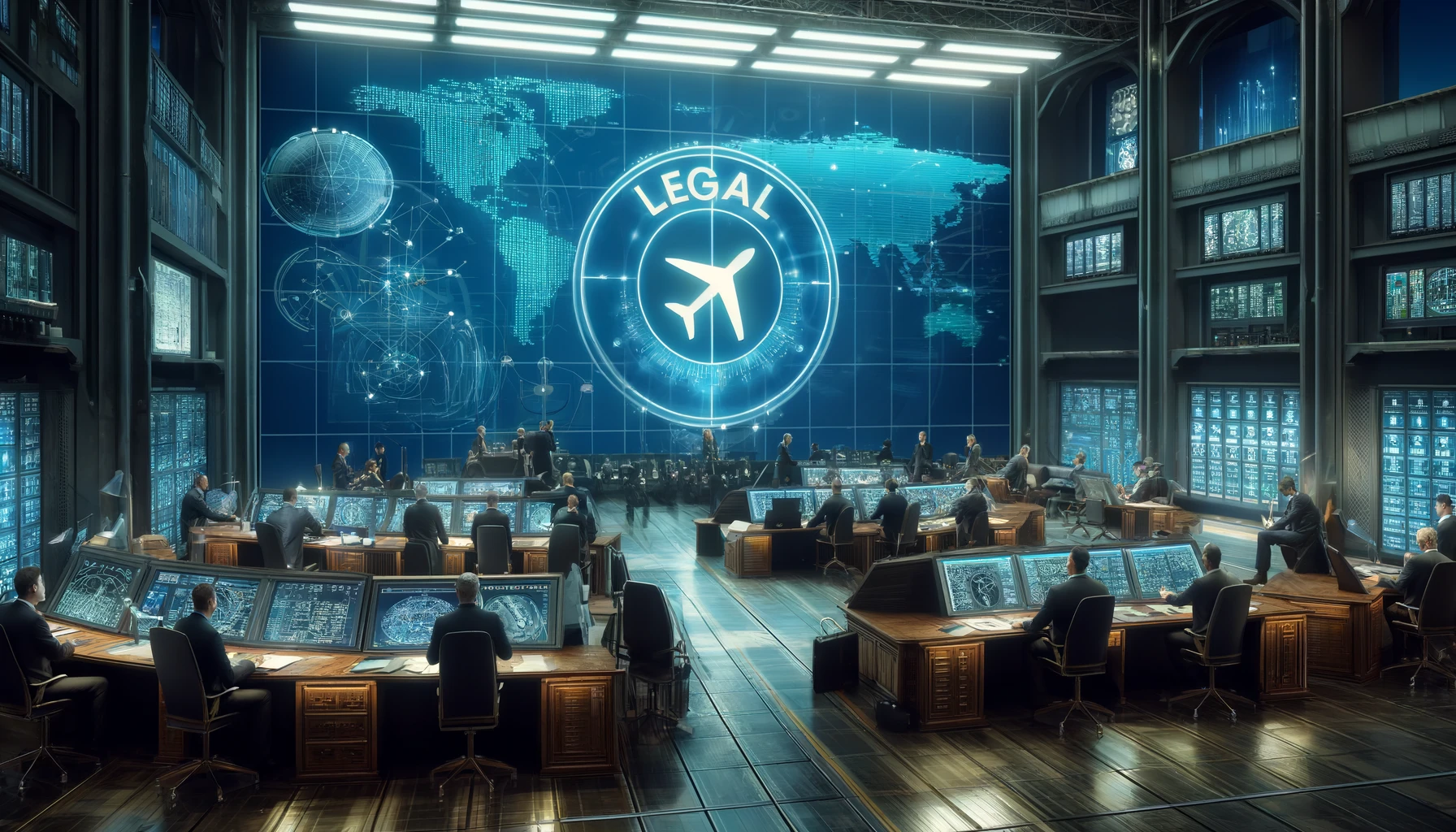Understanding Cybersecurity in the Aviation Law
Cybersecurity in the aviation law has become critical for protecting air transport operations. Digital systems now control flight navigation, passenger data protection, and operational efficiency. Aviation stakeholders face growing cyber threats that require robust legal frameworks.
The aviation industry relies on digital networks and information systems. These systems face constant cyber threats. This creates complex legal challenges for aviation professionals. Cybersecurity in the aviation law addresses these challenges through diverse regulatory frameworks, standards, and guidance.

EU’s NIS Directive: Setting the Cybersecurity Standard
The EU Directive on Security of Network and Information Systems (NIS Directive) governs cybersecurity in the aviation law. The NIS Directive strengthens cybersecurity in critical sectors, including aviation, across the European Union.
Operators of essential services (OES) must implement robust measures. These include air carriers, airport authorities, and traffic control operators. They must prevent, respond to, and mitigate incidents that affect network security. The goal ensures continuity and security of essential air services.
The EU’s NIS Directive aims to create a unified standard for cybersecurity in the aviation law. However, implementation faces significant fragmentation across member states. Key challenges include:
- Varied Interpretation & Application: Each EU country interprets and applies NIS Directive rules differently. This leads to inconsistent standards. This impacts how operators define and regulate essential services.
- Inconsistent Oversight: National authorities have different approaches to overseeing compliance. This creates uneven enforcement across the EU aviation sector.
- Penalty Discrepancies: Fines for non-compliance vary dramatically. The UK’s maximum fine is £17 million, while France (€100,000) and Germany (€50,000) impose significantly lower penalties. This disparity reduces the directive’s deterrent effect.
- Incomplete Transposition: Some EU member states have not fully incorporated the NIS Directive. This creates legal uncertainty for aviation operators working across multiple jurisdictions.
This fragmentation hinders development of a cohesive framework for cybersecurity in the aviation law across the European Union. It increases complexity and compliance burdens for aviation businesses.
ICAO’s Guidance on Aviation Cybersecurity
The International Civil Aviation Organization (ICAO) provides important guidance for cybersecurity in the aviation law. As the UN agency responsible for civil aviation standards, ICAO has developed several documents to address aviation cybersecurity.
ICAO issued the Cybersecurity Policy Guidance. This recommends how states and aviation stakeholders can establish national frameworks. ICAO’s Cybersecurity Strategy outlines objectives and actions for enhancing security. The Cybersecurity Action Plan provides a detailed roadmap.
However, ICAO’s documents serve as non-binding guidance and best practices. They are not enforceable law. States and aviation entities can choose whether to follow ICAO’s recommendations. This leads to varied levels of adoption across different countries.
This lack of enforceability creates gaps in cybersecurity in the aviation law measures. Cyber threats continue to evolve and diversify. Since ICAO’s guidance may not address every scenario, there is a need for continuous updates and adaptations for emerging risks.
Harmonizing Cybersecurity Standards Across Jurisdictions
Differences in regulatory frameworks create challenges for cybersecurity in the aviation law. The EU’s binding directives and ICAO’s voluntary guidance represent a major challenge: harmonizing standards globally.
Aviation entities operating internationally must navigate complex cybersecurity laws. They often need to comply with multiple jurisdictions’ varying requirements. This creates potential legal and operational risks. Gaps in cybersecurity can affect not just one state but the broader international aviation system.
New cyber threats demand quick legal and operational responses. Existing frameworks may lag behind evolving risks. International coordination among states, regulators, and aviation stakeholders is essential. They must develop cohesive strategies for cybersecurity in the aviation law.
Balancing Security and Legal Compliance
As cybersecurity becomes integral to aviation safety and security, legal professionals and policymakers must work together. They need to balance robust cybersecurity with compliance to diverse legal frameworks.
Cyber threats continually evolve. Aviation law must adapt quickly to emerging challenges. Standards must be effective, up-to-date, and enforceable across international borders. This ensures adequate protection for aviation operations and passengers worldwide.
For more information about aviation law, visit our insurance in air law page.
Source:
EU NIS Directive



